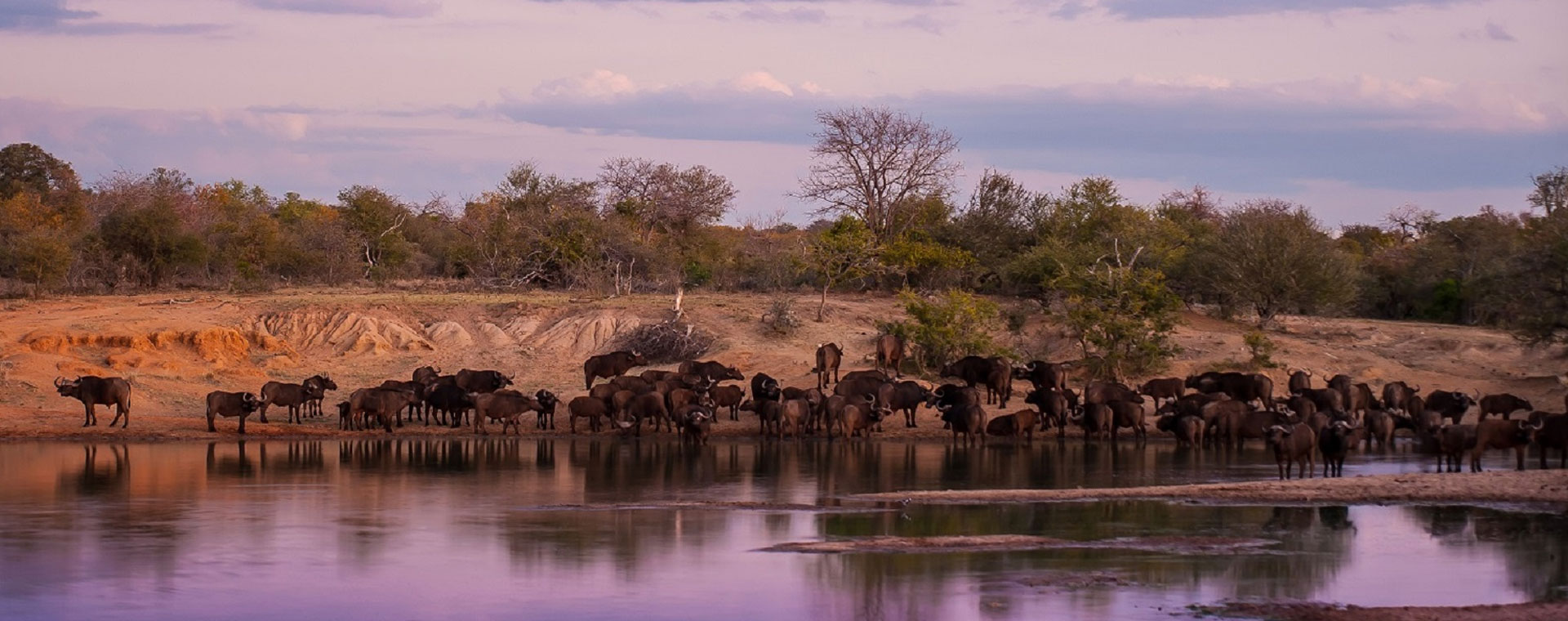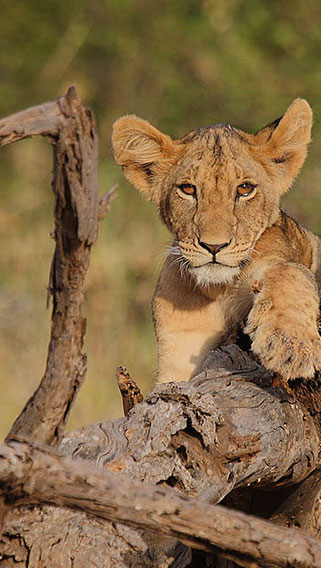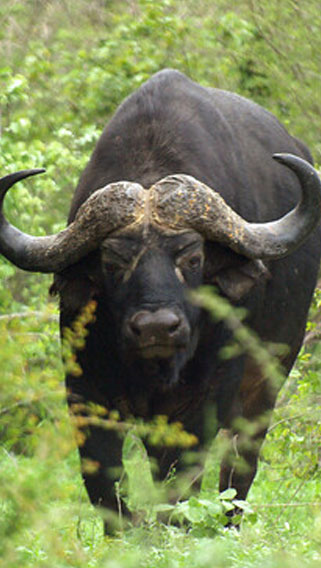
The place of clear water
Buffalo Springs National Reserve - The rugged, hot and arid ‘badlands' of north-eastern Kenya are vast, magnificent and still largely unexplored in terms of safari holidays to Kenya. Constituting more than a third of Kenya's total land area, they are home to less than five per cent of her people; most of whom are hardy nomads. Buffalo Springs takes its name from the pools and springs of fresh clear water, which bubble in its midst, and act as a magnet for large congregations of wild life, especially during the dry season.
Altitude: 850-1,230 meters above sea level.
Area: 131 sq km
Location: Eastern Province, Isiolo District
Distance from Nairobi: 340 km north-east of Nairobi
Gazetted: Presently managed by Isiolo County Council, the national reserve was established in 1948 as part of the Samburu - Isiolo Game Reserve. The present boundaries were formed in 1985
Climate: Hot, dry and semi-arid
Vegetation: Varies between acacia woodland, bushland and scrubland and riverine woodlands
Wildlife: Includes plentiful elephant, and features such rarities as reticulated giraffe, Grevy's zebra and Beisa oryx
Birds: Over 320 species have been recorded
Roads: 4WD is recommended for the journey to and within the national reserve although 2WD vehicles with good ground clearance can be used outside the rainy seasons
Buffalo Springs takes its name from the pools and springs of fresh clear water, which bubble in its midst, and act as a magnet for large congregations of wild life, especially during the dry season (June to October and December to April). A favourite watering hole for the reserve's buffaloes, the springs also act as a draw to literally thousands of sand grouse and doves. The reserve has a couple of seasonal rivers, the Isiolo and the Ngare Mara which flow into the Ewaso Ng'iro.
The reserve is characterized by large tracts of Commiphora-dominated bushland, open areas of lava rock with scattered grass and shrubs and alkaline grasslands dotted with springs and swamps. There is also extensive Acacia tortilis woodland, and a narrow band of riverine forest with magnificent Acacia elatior , Tana River Poplar (Populus ilicifolia ) and Doum Palm (Hyphaene compressa ) along the Ewaso Ng'iro River. The uniform khaki of the shrub is also enlivened by the occasional bulbous trunk and brilliant pink bloom of the indigenous succulent known as the ‘Desert Rose' (Adenium obesum ) while the Salvadora persica (tooth-brush tree) shrub is a favourite both with browsing elephants, and with the nomadic Samburu people, who break off twigs to use as toothbrushes.
As is the case with most dry country ecosystems, wildlife watching varies greatly as the animal populations move about in search of water and pasture.
The reserve's wildlife includes a number of rare and localized races and species, such as the increasingly uncommon reticulated giraffe, with its beautiful jigsaw marking. It is also one of the few areas in Kenya to host the Grevy's zebra, which with its rounded ‘Mickey Mouse' ears is notably different from its more common cousin, the Burchell's zebra. Gerenuks (meaning ‘camel head' in Somali) can also often be seen standing on their hind legs and using their long necks to reach the choicest foliage. Other browsers of the thorny shrub include elands, both lesser and greater kudus, impalas, Bright's gazelles (the pale northern species of Grant's gazelle), warthogs and Kirk's and Guenther's dik-diks. Buffalo, leopard, cheetah and lion are also present.
Large herds of elephant roam the reserve and are best seen crossing the river, or returning to its banks at dusk to bathe.
The lifeblood of this dust-dry desert region, the Ewaso Ng'iro River is home to plentiful pods of snorting hippos, while on its raised sandbanks immense Nile crocodiles bask.
So abundant is this area's birdlife that it is possible to notch up over 100 species in a day, the most noteworthy being the rare blue-shanked Somali ostrich. Secretary birds are plentiful, as are bands of bustling helmeted and vulturine guinea fowls, while along the river storks feed and sand grouse congregate at dusk. Both red-billed and Von der Decken's hornbills are common. The rugged nature of the reserve also provides an ideal raptor habitat; common sightings include; pygmy falcons, martial eagles and Verreaux's eagle owls.
The Reserve, which features in most of the Kenya safari packages, offers a number of Safari Lodges and safari camps.



One of the best times to visit Kenya is from July to September, during the country's dry season, which also coincides with the Great Migration of wildebeest and zebra. The rainy seasons are also good times to travel, as there are fewer visitors and you can admire the striking emerald vegetation.
Wildlife Safari, Witness the Wildebeest Migration, Relax on the East African Coast, Cultural Travel on the Island of Lamu, Climb Mount Kenya, Hike Through Hell's Gate, River Raft the Tana River, Hang Out on Lake Victoria, Explore Nairobi, Eat Nyama Choma, Orphaned Elephants, Hippo Point, Mamba Village
Hello, and welcome! if you have any questions just let me know and we will get back to you ASAP. (Be sure and share your email address just in case we don't get back before you leave our site.)
Diwaka Safaris works with your wish list, or offers obligation-free advice, on personally-curated safaris to fit your schedule, budget and desires.
Find Out MoreWe offer unique safaris in East Africa. Our team of proven professionals offer Family Holidays, Cultural Safaris, Eco Safaris, Bird watching Safaris, Beach Holidays, Honeymoon Holidays, Mountain Climbing and Trekking safaris,Camping safaris, photographic Safaris Groups and incentive tour packages, Car hire, Balloon safaris with a personal touch to meet the needs of each of our esteemed customer.
Vladimír Staňura – USA
We wanted to do safari with my wife in Kenya. Diwaka Safaris organized our trip for 17 days professionally. We were very satisfied with all services. The best part was our guide Patrick Waweru who did an excellent job.
josefkingley – USA
Decided to do one a early Jan before the corona nightmare...wasnt decided on the exact itinerary especially the accommodation to choose...did my own research and decided on the ones I could get though decided they can also advice on what they had in mind so that we could compare prices as well as I could get to check on their diff reviews...was a 4 nights trip just Naivasha where we stayed at Naivasha Sopa and Mara at Ashnil..loved ashnil way better cos of the views as well what we got to see the in terms of wildlife..